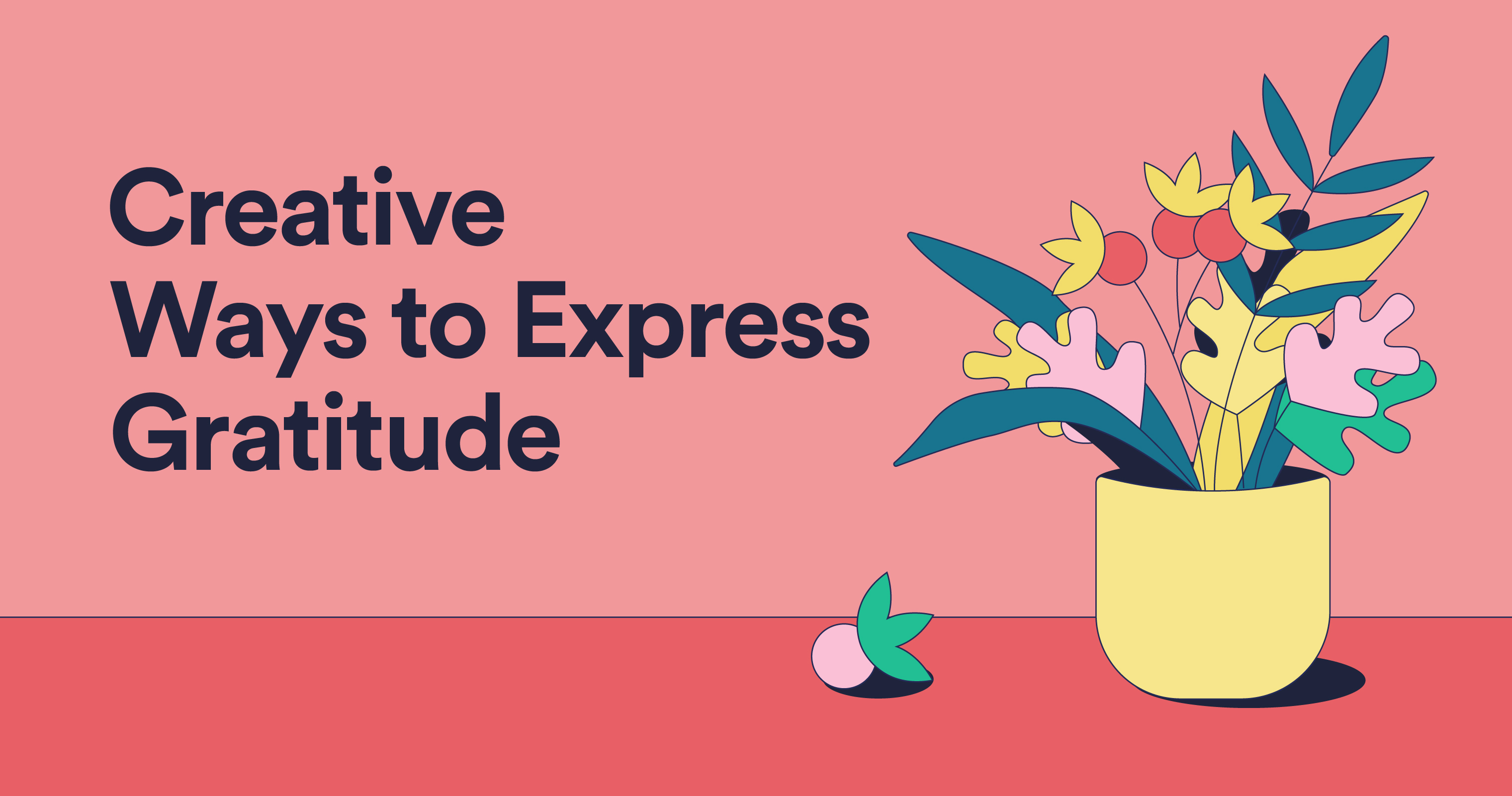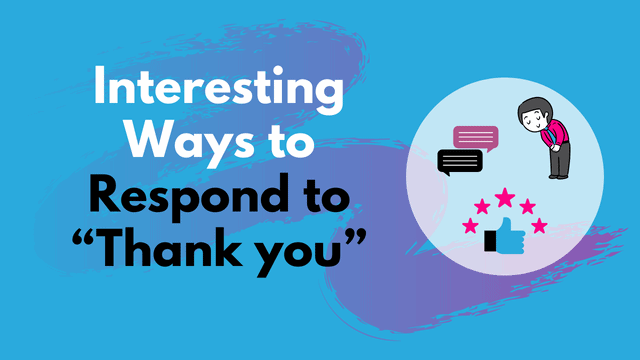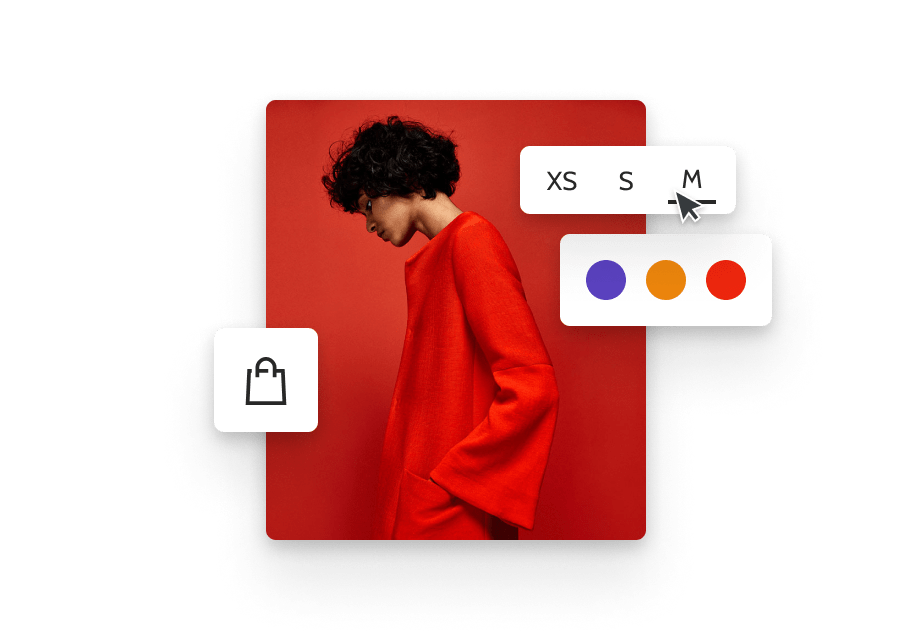How to Respond to ‘Thank You’ – Top Ways to Show Appreciation
Responding to “Thank you” can feel tricky. You want to show genuine appreciation.
This guide will help you craft the perfect response. When someone thanks you, it’s important to acknowledge their gratitude thoughtfully. Your response can strengthen relationships, show respect, and make the other person feel valued. Whether it’s in a professional setting or among friends, knowing how to respond appropriately is key.
This blog post will explore the best ways to respond to “Thank you” with sincerity and grace. From simple phrases to more heartfelt replies, you’ll find tips to suit any situation. Ready to enhance your appreciation skills? Let’s dive in and learn how to make your responses meaningful and memorable.
Importance Of Responding
Responding to a simple ‘Thank You’ is more important than you might think. It shows that you value the gesture and respect the person. Acknowledging gratitude helps in forming stronger connections and leaves a positive impression. Let’s dive into why this is essential.
Building Strong Relationships
When you respond to someone’s gratitude, you’re building a foundation of trust and respect. A simple reply like “You’re welcome” or “My pleasure” can make a big difference. This small act shows that you value the relationship and are willing to nurture it.
- Shows respect for the other person
- Reinforces positive interactions
- Encourages future communication
People remember those who acknowledge their gestures. It makes them feel valued and appreciated. This creates a sense of belonging and strengthens the bond between you and the other person.
Creating Positive Impressions
First impressions are crucial, and responding to a ‘Thank You’ leaves a positive mark. It shows that you are polite and considerate. This is especially important in professional settings where your response can affect your reputation.
| Response | Impression |
|---|---|
| You’re welcome | Polite and respectful |
| No problem | Easy-going and friendly |
| My pleasure | Gracious and thoughtful |
Choosing the right words can make you stand out. It shows you are mindful of others’ feelings. This is especially true in cultures where politeness is highly valued.
In summary, responding to a ‘Thank You’ builds strong relationships and creates positive impressions. It’s a small yet powerful way to show your appreciation.
Simple Verbal Responses
Expressing gratitude is a beautiful gesture. But how do you respond to a simple “Thank you”? There are many ways to show your appreciation. Here, we focus on simple verbal responses. These responses are easy to remember and use. They help maintain a positive interaction.
You’re Welcome
“You’re welcome” is a classic response. It is polite and straightforward. It shows that you acknowledge the gratitude. This phrase is suitable in both formal and informal settings.
For example, someone thanks you for holding the door. A simple “You’re welcome” is perfect. It keeps the conversation light and friendly. It also encourages further positive interactions.
My Pleasure
“My pleasure” is another great response. It adds a personal touch. This phrase shows that you were happy to help. It conveys a sense of joy in assisting others.
Use “My pleasure” in various situations. Someone thanks you for a small favor. Respond with “My pleasure” to make them feel special. It makes the interaction warm and genuine.
Expressing Gratitude
Expressing gratitude is an important part of our daily interactions. It strengthens relationships and fosters a sense of connection. Knowing how to respond to a ‘Thank You’ can make a big difference. Below, we explore some of the best ways to show your appreciation.
Thank You Back
One simple way to respond to ‘Thank You’ is to say ‘Thank You’ back. This shows that you also appreciate the other person. It creates a mutual sense of respect and gratitude.
Here are some examples:
- “Thank you!”
- “Thank you for saying that.”
- “I appreciate your thanks.”
I’m Glad I Could Help
Another effective response is to express your happiness in being able to help. This shows that you care about the other person’s well-being. It also reinforces the positive impact of your actions.
Consider using these phrases:
- “I’m glad I could help.”
- “It’s my pleasure.”
- “Happy to assist.”
By using these responses, you can effectively express your gratitude. It helps build stronger relationships and fosters a positive environment.

Adding Personal Touch
Responding to ‘Thank You’ can feel straightforward. But adding a personal touch makes it special. Simple gestures can create deeper connections. Let’s explore ways to do this.
Using The Person’s Name
Names hold power. They make interactions feel more personal. Use the person’s name when you reply. It shows you value them. For example, say, “Thank you, Sarah, for your help.” It’s a small effort. But it makes a big difference.
Sharing A Compliment
Compliments brighten someone’s day. They show you notice their efforts. Include a genuine compliment in your reply. It can be as simple as, “Thank you for your hard work. You did great!” This shows appreciation. It also boosts their confidence.
Non-verbal Responses
Sometimes words are not necessary to show appreciation. Non-verbal responses can be powerful and convey your gratitude effectively. These gestures are simple, yet they hold significant meaning. Let’s explore a few non-verbal ways to respond to ‘Thank You’.
Smiling
A genuine smile goes a long way. It is a universal sign of happiness and gratitude. When someone thanks you, a warm smile can show that you appreciate their words. It also makes the interaction more personal and sincere.
Here are some benefits of smiling:
- It creates a positive atmosphere.
- It makes both you and the other person feel good.
- It builds a connection without words.
Nodding
A simple nod can convey acknowledgment and appreciation. This gesture is subtle but effective. It shows that you heard the person and value their thanks.
Nodding can be used in various situations:
| Situation | Effect |
|---|---|
| In a meeting | Shows attentiveness |
| In a casual conversation | Indicates agreement |
| In a classroom | Signals understanding |
Both smiling and nodding are simple yet impactful ways to show your appreciation. Try using these non-verbal responses to make your gratitude felt.

Written Responses
Responding to a ‘Thank You’ can be done in various thoughtful ways. A simple “You’re welcome” or “My pleasure” shows you appreciate their gratitude. Adding a personal touch, like “I’m glad I could help,” can make your response even warmer.
Responding to a ‘Thank You’ in writing shows thoughtfulness and care. Written responses can be more personal and meaningful. This section explores the best ways to show appreciation through written responses.Handwritten Notes
Handwritten notes are timeless. They show effort and sincerity. Start with a warm greeting. Mention the specific reason for your thanks. Keep the message short but heartfelt. Close with a friendly sign-off. Handwritten notes can leave a lasting impression.Emails And Text Messages
Emails and text messages are quick and convenient. They are perfect for fast responses. Start with a friendly greeting. Acknowledge the reason for the thank you. Keep the message short and clear. End with a courteous sign-off. Emails and texts can be informal or formal, based on your relationship with the person.Cultural Considerations
When someone thanks you, responding appropriately can deepen your connection. Different cultures have their own ways to show gratitude. Understanding these customs is crucial to avoid misunderstandings. Here’s how you can navigate cultural considerations.
Respecting Traditions
In some cultures, a simple “You’re welcome” works fine. In others, more formal responses are expected. For instance, in Japan, bowing when thanking someone shows deep respect. In Italy, a warm smile and eye contact are key. Respecting traditions shows you value the other person’s culture.
Understanding Cultural Norms
Every culture has specific norms for expressing gratitude. In the United States, responding with “No problem” is common. In France, you might hear “Je vous en prie,” meaning “You’re welcome.” Knowing these norms helps you respond appropriately. It also shows that you care about their cultural background.
Professional Settings
Responding to ‘Thank You’ in professional settings is crucial for building strong relationships. The way you acknowledge gratitude reflects your professionalism and respect. Let’s explore the best ways to respond to colleagues and clients.
Responding To Colleagues
In an office environment, interactions with colleagues are frequent. A genuine response to their ‘Thank You’ can foster a positive workplace culture.
- Simple Acknowledgment: A straightforward “You’re welcome” or “Glad to help” works well.
- Express Gratitude: Say, “I appreciate your support too.”
- Offer Further Assistance: “Let me know if you need anything else.”
When communicating via email, a polite response can enhance your professional image. Consider using:
Dear [Colleague's Name],
Thank you for your kind words. I'm always here to help.
Best regards,
[Your Name]
Acknowledging Clients
Clients appreciate acknowledgment of their gratitude. It shows you value their business.
| Situation | Response |
|---|---|
| Client thanks for timely delivery | “It was our pleasure to assist you promptly.” |
| Client appreciates customer service | “We’re thrilled to hear that. Your satisfaction is our priority.” |
For a more personalized touch, respond with:
Dear [Client's Name],
Thank you for your kind feedback. We're here to support your needs.
Best regards,
[Your Name]
Common Mistakes
Responding to ‘Thank You’ may seem simple. Yet, many people make common mistakes. These errors can affect how genuine your appreciation feels. Let’s explore some of these mistakes. We’ll ensure your responses feel genuine and sincere.
Overdoing It
One common mistake is overdoing your response. You may feel the need to give a big, elaborate thank you. But this can overwhelm the other person. Keep your reply simple. A polite “You’re welcome” often suffices. Avoid long-winded responses. They can seem forced and unnecessary.
Sounding Insincere
Another mistake is sounding insincere. If your response lacks feeling, it shows. People can sense when you are not genuine. Use heartfelt words. Mean what you say. A sincere “My pleasure” or “I appreciate it” goes a long way. Avoid using robotic phrases. They can make your response feel cold.
Practice Makes Perfect
Responding to ‘Thank You’ can sometimes be tricky. You want to show your appreciation without sounding repetitive or insincere. One way to improve your responses is through practice. The more you practice, the more natural and sincere your responses will feel.
Role-playing Scenarios
Role-playing can help you prepare for real-life situations. Practice with a friend or family member. Create scenarios where someone thanks you, and respond as you would in real life.
- Scenario 1: A colleague thanks you for helping with a project.
- Scenario 2: A neighbor thanks you for a favor.
- Scenario 3: A customer thanks you for excellent service.
Try different responses. For instance, you could say, “You’re welcome,” “It was my pleasure,” or “I’m happy to help.”
Seeking Feedback
Feedback is essential for improvement. Ask for feedback from those you practice with. They can tell you how your responses sound. Do they feel genuine? Do they sound forced?
Constructive criticism can help you refine your responses. Make a habit of seeking feedback regularly.
Here’s a simple feedback table:
| Scenario | Response | Feedback |
|---|---|---|
| Colleague thanks you | “You’re welcome!” | Sounds sincere, but try varying your tone. |
| Neighbor thanks you | “It was my pleasure!” | Very genuine, keep it up. |
| Customer thanks you | “Happy to help!” | Great response, maybe add a smile. |
By practicing and seeking feedback, your responses to ‘Thank You’ will become more sincere and natural over time.

Frequently Asked Questions
What Is A Polite Way To Respond To ‘thank You’?
A polite way to respond is by saying, “You’re welcome. ” It’s a simple and effective way to show your appreciation.
How Can I Express Gratitude In Response?
You can express gratitude by saying, “I appreciate it. ” This acknowledges the thanks and shows your recognition.
Is ‘no Problem’ A Good Response To ‘thank You’?
Yes, “No problem” is a casual and friendly response. It’s suitable in informal settings and conveys ease.
Can I Say ‘my Pleasure’ In Response To ‘thank You’?
Yes, “My pleasure” is a warm and formal response. It indicates that you were happy to help.
Conclusion
Showing appreciation is important in every interaction. Responding to “Thank you” can strengthen relationships. Use simple phrases to express gratitude. Try “You’re welcome” or “Happy to help. ” A sincere response shows you care. Practice these responses in daily life.
It will make a positive impact. Remember, genuine appreciation fosters good connections. Keep it simple and heartfelt. Your kind words will be remembered. So, always respond with warmth and sincerity. Spread positivity with your replies.






